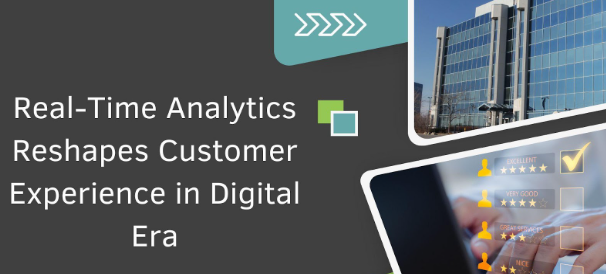In a groundbreaking research paper published in the International Journal of Scientific Research in Computer Science, Engineering and Information Technology, Amarnath Immadisetty, a technology expert from the United States and leading authority in digital transformation, presents a comprehensive framework for implementing real-time analytics in customer experience management. His research provides crucial insights into how organizations can leverage instant data processing capabilities to transform customer interactions, offering a roadmap for businesses seeking to enhance their digital engagement strategies.
The Evolution of Smart Response Systems
The transformation from traditional feedback mechanisms to sophisticated digital approaches marks a pivotal shift in how businesses engage with customers. Organizations have moved beyond periodic surveys and annual reviews to implement systems that can process and respond to customer interactions instantaneously. This evolution represents a fundamental change in how businesses understand and meet customer needs in real-time. Real-time analytics has emerged as the cornerstone of modern customer experience management, enabling businesses to capture, analyze, and act upon customer data within seconds, creating more personalized and responsive service delivery models that were previously impossible with traditional methods.
The Architecture of Innovation
Modern real-time analytics systems employ a sophisticated technical framework that seamlessly integrates multiple components. At its core, the system utilizes advanced sensors, APIs, and monitoring tools to capture customer interactions across various touchpoints. Stream processing systems form the backbone, employing cutting-edge algorithms for continuous data processing and pattern recognition, enabling businesses to transform raw data into actionable insights instantaneously. The architecture incorporates scalable cloud infrastructure and distributed computing capabilities, allowing organizations to handle massive data volumes while maintaining processing speed and accuracy.
Revolutionizing E-commerce Experience
The implementation of deep neural collaborative filtering in personalized recommendation systems has revolutionized online shopping experiences. These systems can analyze and respond to micro-interactions in real-time, enabling immediate adjustments to user interfaces and promotional strategies. Dynamic inventory management systems leverage real-time data to optimize stock levels and prevent stockouts while minimizing holding costs.
Smart Travel Solutions
The travel industry has witnessed remarkable transformation through the integration of microservices architecture. These systems enable highly scalable dynamic pricing that can process multiple data streams simultaneously. Advanced demand forecasting capabilities now include real-time analysis of various factors, including weather patterns, local events, and social media sentiment, leading to optimized revenue management and enhanced customer satisfaction.
The Future of Customer Engagement
The landscape of real-time analytics continues to evolve with emerging technologies that are fundamentally transforming customer engagement. The relationship between technological advancement and customer expectations creates a cycle of innovation, where new capabilities drive higher expectations, which in turn fuel further technological development. This pattern is particularly evident in the push for faster, more personalized customer responses.
Measuring Success Through Impact
Organizations implementing real-time analytics have reported significant improvements in customer satisfaction metrics and business performance indicators. The ability to provide personalized, timely responses to customer needs has emerged as a key differentiator in competitive markets. Studies show consistent positive correlation between real-time analytics implementation and revenue growth, with organizations reporting enhanced upselling and cross-selling success rates.
The Road Ahead
The future of real-time analytics promises even more sophisticated solutions powered by artificial intelligence and edge computing. These advancements will enable more proactive customer engagement, moving beyond responsive systems to predictive ones that can anticipate and address customer needs before they arise. The ongoing research in this field continues to shape how organizations approach customer experience management in the digital age. As technology evolves, businesses must stay agile and embrace these innovations to maintain their competitive advantage and deliver exceptional customer experiences at scale.
In his concluding remarks, Amarnath Immadisetty emphasizes that real-time analytics has evolved from being a competitive advantage to becoming a fundamental requirement for modern business operations. The research provides a structured framework for organizations seeking to enhance their real-time analytics capabilities. As businesses continue to navigate the digital transformation landscape, the integration of real-time analytics will be crucial for delivering superior customer experiences and maintaining competitive edge in an increasingly data-driven marketplace. Organizations that fail to adopt these technologies risk falling behind in meeting evolving customer expectations and market demands.



































